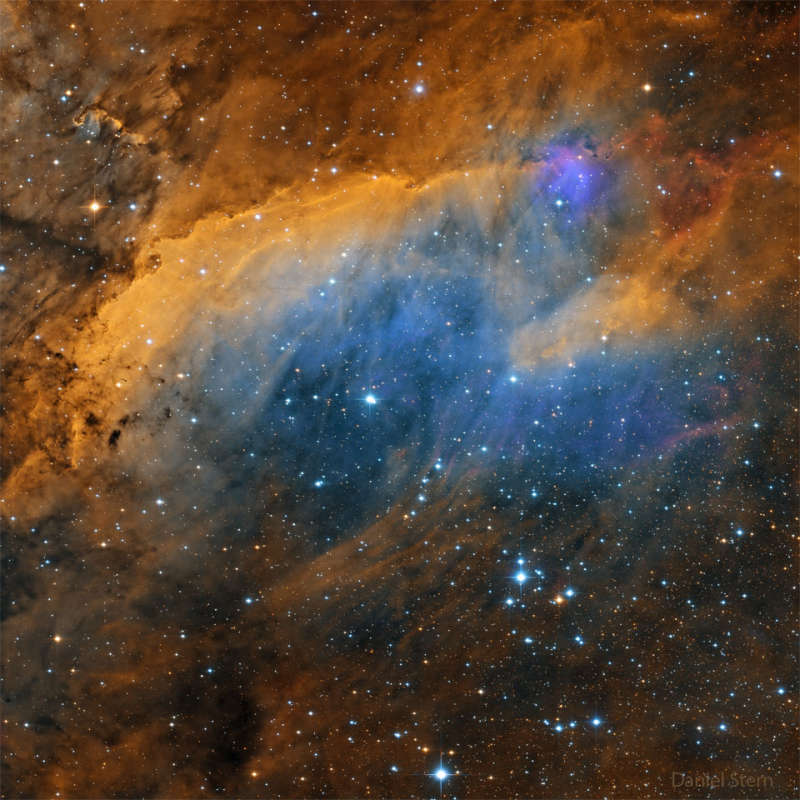Credit & Copyright: Daniel Stern
Explanation:
South of Antares, in the tail of
the nebula-rich constellation
Scorpius,
lies emission nebula IC 4628.
Nearby hot,
massive stars, millions of years young,
irradiate the
nebula with invisible
ultraviolet light, stripping electrons from atoms.
The electrons eventually recombine with the atoms to produce the
visible nebular glow,
dominated by the red emission of hydrogen.
At an estimated distance of 6,000 light-years, the
region shown
is about 250
light-years across,
spanning over three full moons on the sky.
The nebula is also
cataloged as Gum 56 for Australian astronomer
Colin Stanley Gum,
but seafood-loving deep sky-enthusiasts might
know this cosmic cloud as the
Prawn
Nebula.
The
graceful color image is a new astronomical
composition taken over several nights in April from
Rio Hurtado,
Chile.
1999 2000 2001 2002 2003 2004 2005 2006 2007 2008 2009 2010 2011 2012 2013 2014 2015 2016 2017 2018 2019 2020 2021 2022 2023 2024 2025 |
Январь Февраль Март Апрель Май Июнь Июль Август Сентябрь Октябрь Ноябрь Декабрь |
NASA Web Site Statements, Warnings, and Disclaimers
NASA Official: Jay Norris. Specific rights apply.
A service of: LHEA at NASA / GSFC
& Michigan Tech. U.
|
Публикации с ключевыми словами:
emission nebula - эмиссионная туманность
Публикации со словами: emission nebula - эмиссионная туманность | |
См. также:
Все публикации на ту же тему >> | |
